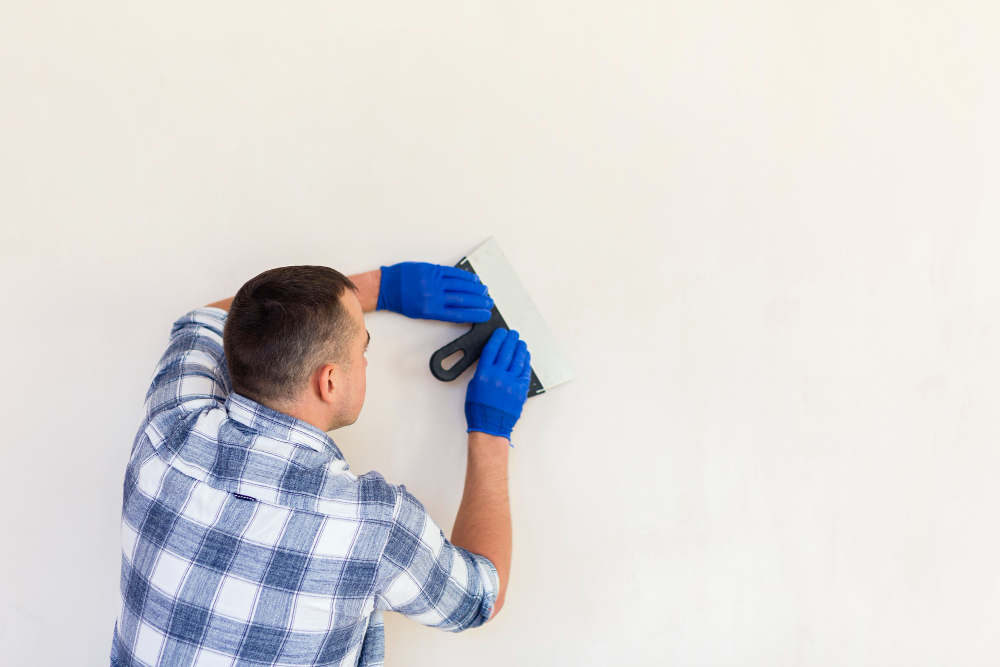The Importance of Proper Caulking in Painting

A fresh coat of paint has the power to truly transform a property, turning it into something new and vibrant. However, achieving that perfect finish requires more than just a few brush strokes. Successful painting projects start long before the paint is applied, with meticulous preparation being the key. And one crucial aspect of this preparation is proper caulking.
Caulking plays a vital role in ensuring a seamless and professional-looking paint job. It helps to fill in any gaps or cracks in the surfaces, creating a smooth and uniform appearance. By sealing these imperfections, caulking not only enhances the aesthetic appeal but also provides protection against moisture, drafts, and other external elements.
To ensure that caulking is done right, attention to detail is essential. Begin by thoroughly inspecting the surfaces that need caulking, paying close attention to areas around windows, doors, baseboards, and trim. Clean the surfaces and remove any old caulk or debris, ensuring a clean and smooth foundation for the new caulk.
Next, choose the appropriate caulk for the job based on the type of surface and the specific requirements. Different caulks are designed for different purposes, such as indoor or outdoor use, flexibility, and paintability. Selecting the right caulk will ensure optimal performance and durability.
When applying the caulk, use a steady hand and apply a smooth and consistent bead along the gaps or cracks. For larger gaps, consider using a backer rod or foam filler before applying the caulk. Smooth out the caulk using a caulk tool or a damp cloth, removing any excess and creating a neat finish.
Remember, proper caulking is a crucial step in achieving a flawless paint job. By taking the time to prepare and caulk the surfaces correctly, you can ensure a professional-looking result that not only enhances the visual appeal but also improves the longevity and durability of the paint. So, before you pick up that paintbrush, make sure to give due attention to the important task of caulking.
Why Caulking Matters
Proper caulking is not just a minor preparatory activity; it plays a crucial role in ensuring the longevity and effectiveness of a paint job. By sealing gaps and cracks, caulking prevents moisture from seeping in, protects against drafts, and enhances the overall appearance of the painted surface. Taking the time to carefully caulk before painting can make a significant difference in the durability and quality of the finished result.
Prevents Moisture Damage
Caulking seals the gaps and cracks where moisture might seep in, protecting the material underneath from water damage, which can cause rot, mold, and a host of other issues.
Improves Energy Efficiency
Properly sealing openings can prevent air leaks, leading to better temperature control within your property. This not only makes for a more comfortable environment but can also lead to savings on energy bills.
Enhances Aesthetics
Caulk provides a smooth, finished appearance by covering up gaps between different materials. This helps make your paint job look more professional and complete.
Choosing the Right Caulking Products
Types of Caulking Materials
There are silicone, acrylic, and polyurethane caulks available, each with its advantages and best-use scenarios.
Factors to Consider When Selecting Caulk
The material you're sealing, the location (interior vs. exterior), and the conditions it needs to withstand (temperature changes, moisture levels) are all vital considerations.
Proper Caulking Techniques
Surface Preparation
Before applying caulk, ensure the surface is clean and dry. Remove any old caulk, dirt, or debris that might prevent the new caulk from adhering correctly.
Application Methods
Hold the caulking gun at a consistent angle and apply steady pressure to produce a smooth bead. Smooth the caulk with a wet finger or a caulking tool for an even finish.
Caulking Tools
Apart from the caulking gun, tools like a scraper or a utility knife will aid in the removal of old caulk, while a damp rag can help in cleanup and smoothing.
Common Mistakes to Avoid
Over/Under Caulking
Applying too much caulk can be just as problematic as applying too little. Strike the right balance to ensure full coverage without excess.
Improper Sealant Compatibility
Always check if the caulk is compatible with the surface and paint. Incompatibility can lead to a failed seal or damage to the surface.
Inadequate Surface Cleaning
Even the best caulking won't adhere effectively if you apply it to a dirty or moist surface. Ensure thorough cleaning and drying for best results.
Conclusion
A professional-looking paint job isn't just about painting; it's also about how well you prepare the surfaces, which includes the skillful application of caulk. Correct caulking prevents damage, provides energy efficiency, and contributes to the overall aesthetics of your paintwork.
If you're in need of commercial painting contractors in South Daytona, FL, who understand the importance of a job done right, look no further. Color Masters Painting provides expert services and is dedicated to ensuring every aspect of your painting project is performed with precision. Contact us today for your free quote, and let's ensure your painting project stands the test of time with the proper preparation.
For those ready to give their commercial property the attention it deserves, Color Masters Painting is here to provide top-notch quality and service.